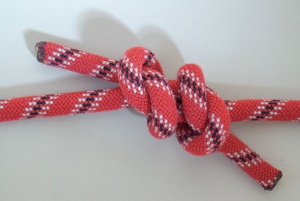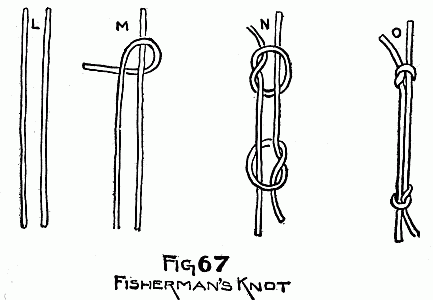Difference between revisions of "Fisherman's Knot"
(→Ussage) |
m |
||
| (One intermediate revision by one user not shown) | |||
| Line 15: | Line 15: | ||
== Ussage == | == Ussage == | ||
| − | Joining thin, stiff or slippery lines | + | * Joining thin, stiff or slippery lines |
| − | As anchoring line for boats on Piers, knot can move during low and high tide. | + | * As anchoring line for boats on Piers, knot can move during low and high tide. |
| + | |||
== Sources and References == | == Sources and References == | ||
Latest revision as of 03:03, 29 November 2013
The fisherman's knot is a bend (a knot for joining two lines) with a symmetrical structure consisting of two overhand knots, each tied around the standing part of the other. Other names for the fisherman's knot include: angler's knot, English knot, halibut knot, waterman's knot.
Though the fisherman's knot is associated with fishing, it can slip when tied in nylon monofilament and other slippery lines; however, if more holding strength is required, the overhand knots can be made with more turns, as in the double fisherman's knot, and so on. It is compact, jamming when tightened and the working ends can be cropped very close to the knot. It can also be easily tied with cold, wet hands. Though these properties are well suited to fishing, there are other knots which may provide superior performance, such as the blood knot.
Contents |
Steps
Videos
Ussage
- Joining thin, stiff or slippery lines
- As anchoring line for boats on Piers, knot can move during low and high tide.

